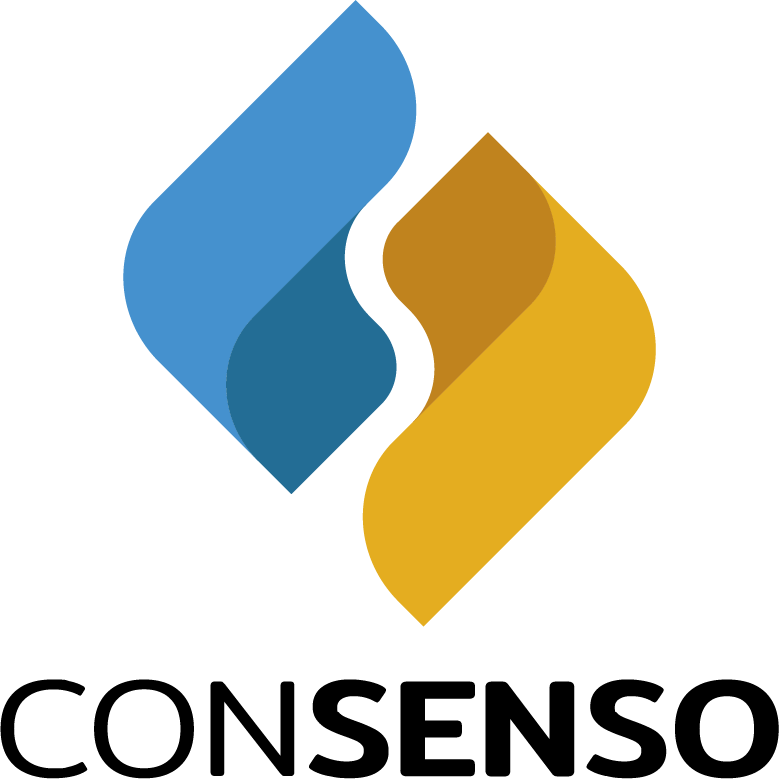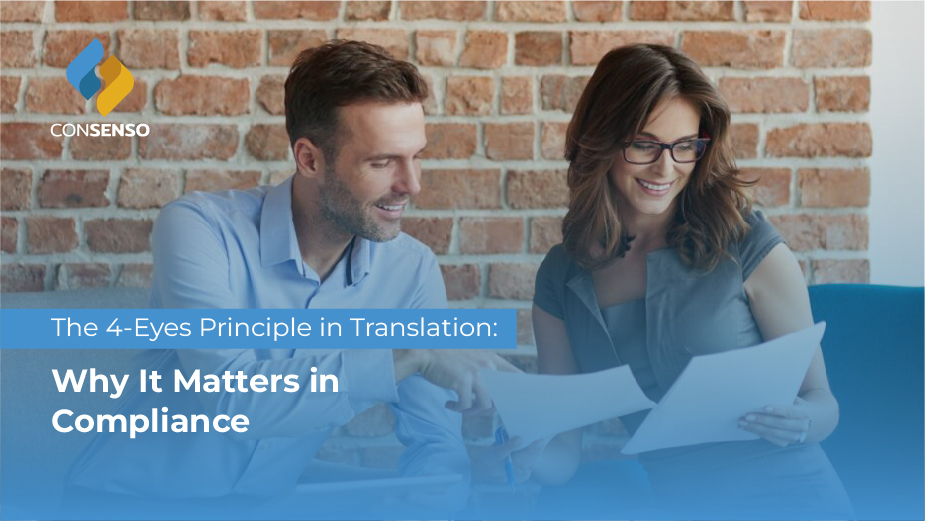In regulated industries, quality control isn’t optional — it’s part of compliance.
That’s where the 4-eyes principle comes in: a systematic, two-person review process that ensures every translation meets accuracy, clarity, and regulatory standards before it goes live.
In this post, we unpack what the 4-eyes principle is, how it works, and why it’s a must-have for sectors like legal, financial, medical, and technical content.
What Is the 4-Eyes Principle?
The 4-eyes principle means that every translation is reviewed by at least two qualified professionals before delivery:
- The translator, who produces the initial content.
- A second linguist or reviewer, who checks for:
- Terminology consistency
- Contextual accuracy
- Style and tone
- Formatting or tag issues
This dual-layer approach helps catch:
- Hidden errors
- Omissions or misinterpretations
- Brand tone inconsistencies
- Non-compliance with glossary or ISO norms
Why Is This Important for Compliance?
For businesses in regulated sectors, translation errors can be costly:
| Industry | Risk of Skipping Review |
| Legal | Contractual misunderstandings, liability issues |
| Healthcare | Misuse of medical instructions, patient safety risks |
| Finance | Regulatory breach, investor confusion |
| Tech & Industry | Incorrect specs, user safety concerns |
ISO 17100 requires the 4-eyes principle — it’s part of being a certified language provider.
Business Benefits of the 4-Eyes Process
- Reduces human error
- Improves brand consistency
- Ensures compliance with style guides and legal terms
- Builds trust with internal teams and regulators
- Supports internal QA tracking and reporting
What the Review Covers
A structured review typically includes:
| Check Type | Example |
| Terminology | Product terms follow approved glossary |
| Tone and Voice | Legal docs remain formal; UX texts are user-friendly |
| Formatting | No broken tags or layout issues in final file |
| Accuracy | No omissions, mistranslations, or added content |
| Country Adaptation | Regional differences addressed (Spain vs. LATAM) |
Expert Tip
The 4-eyes review is not about “fixing” poor translation — it’s about adding a second qualified perspective. It should be constructive, not corrective.
Conclusion: One Process, Twice the Confidence
Translation is more than converting words — it’s about conveying meaning, legally and professionally.
For industries where risk is real, the 4-eyes principle provides an essential safety net that ensures quality and compliance every time.
Let Us Be Your Second Set of Eyes
At Consenso Global, we apply the 4-eyes principle to every translation project — combining linguistic expertise with compliance-driven workflows.




